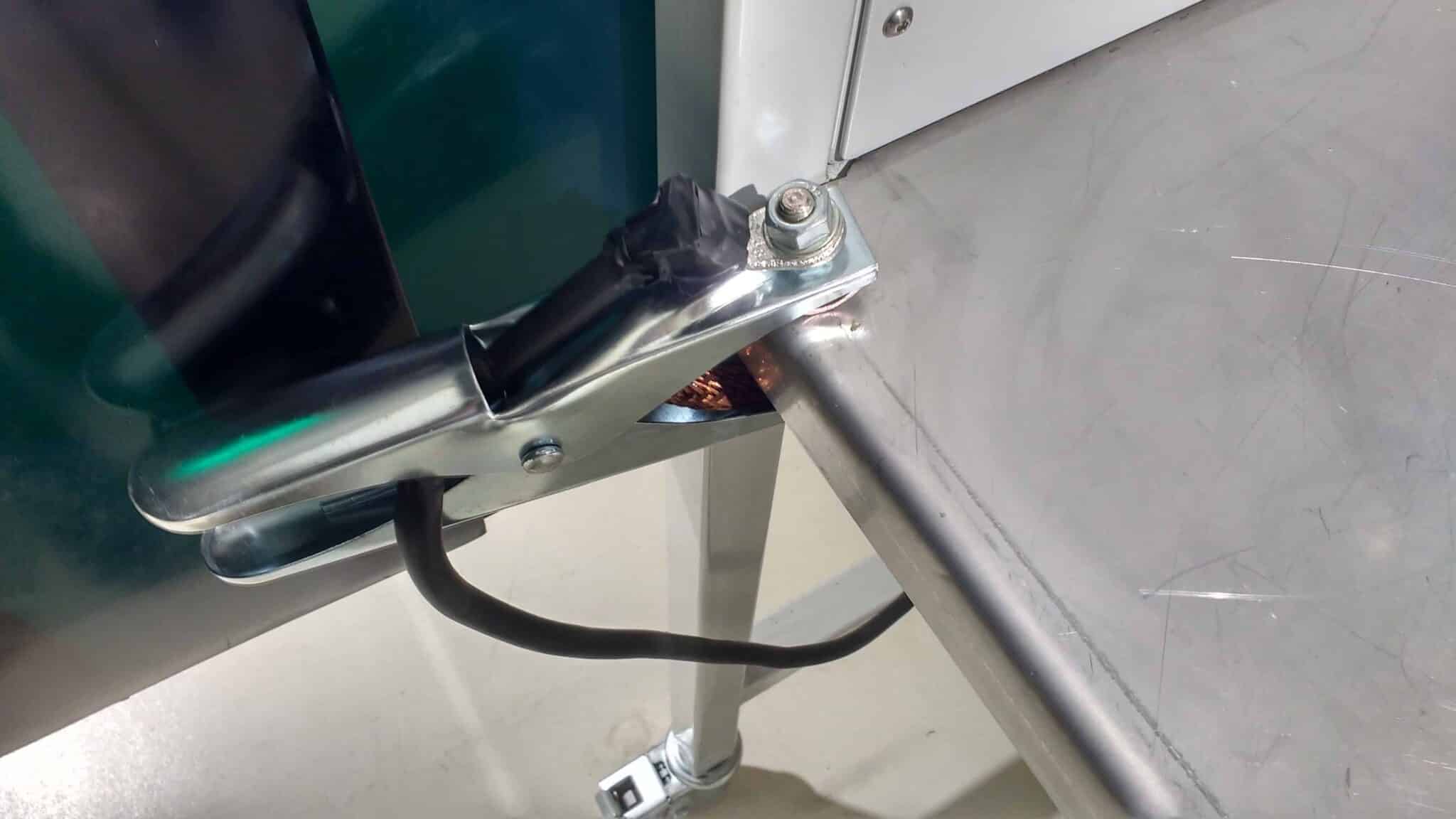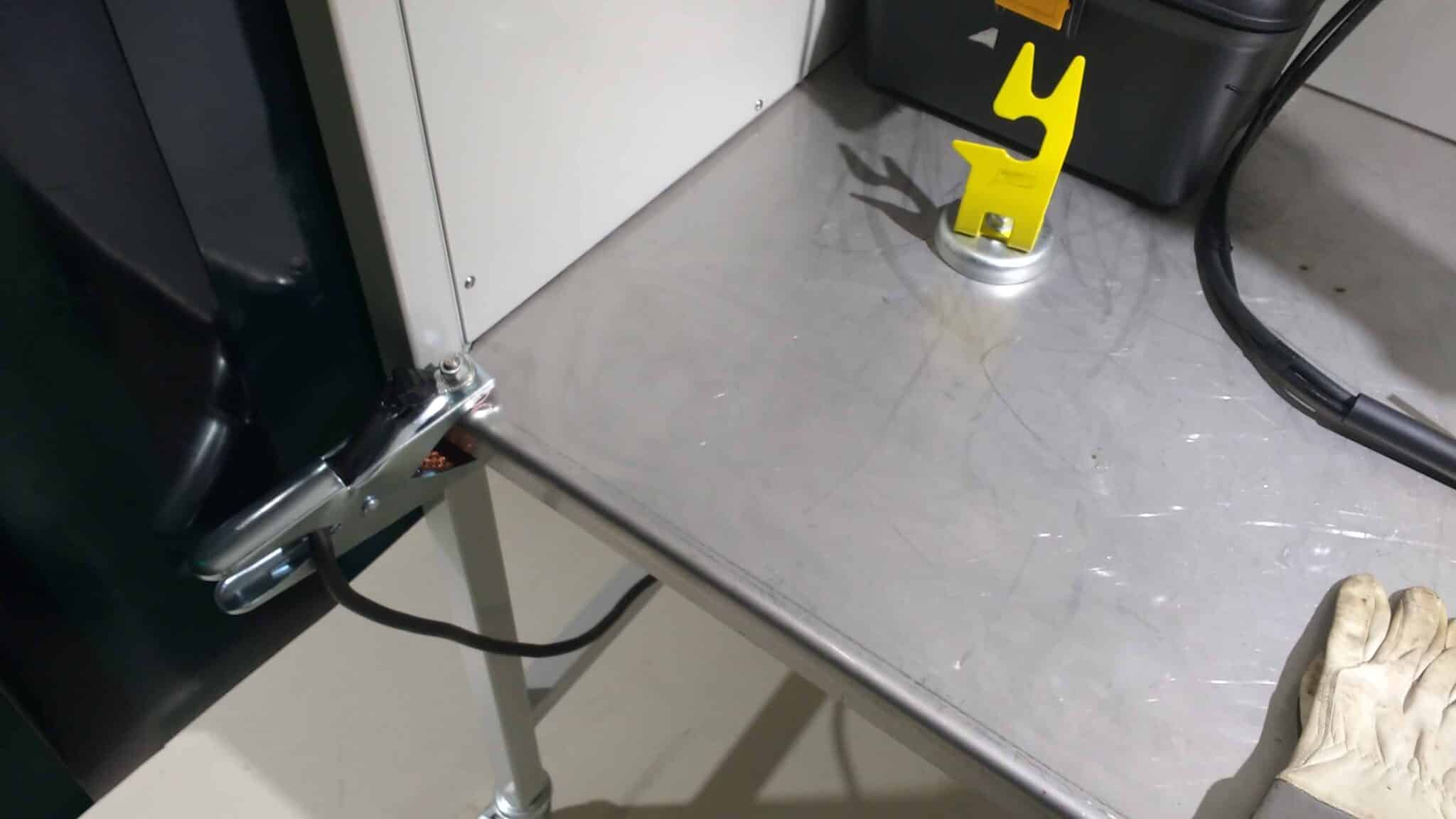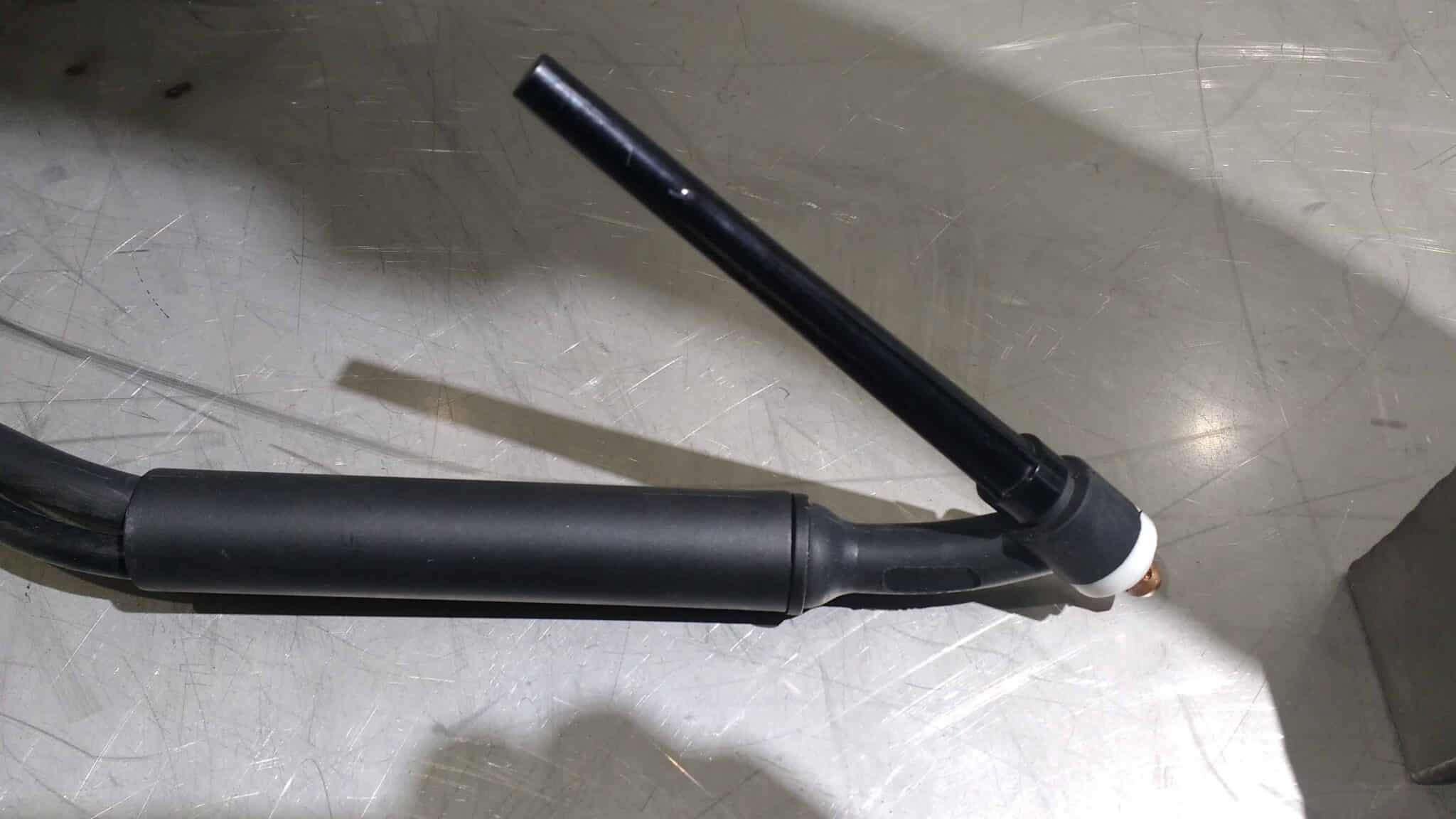“This post contains affiliate links, and I will be compensated if you make a purchase after clicking on my links.”
Do you know these little unpleasant wake up calls from your TIG welder? In this article, I will explain what the most likely causes are and how to prevent them.
Your TIG welder shocks you because electricity chooses the path of least resistance. And that shouldn’t be you! Check if your welding equipment is in perfect working condition, the ground clamp is correctly placed and has good contact to the surface.
If you are interested in a more depth answer, or you are not sure how to locate the issue in your case, find the main areas to look at below. This will help you discover the vast majority of causes.
How electricity flows
As mentioned before, electricity always chooses the way of least resistance. Generally, that should be the table attached to a ground clamp. Metal has a much higher conductivity coefficient than your skin, which means that the electrons encounter less resistance flowing through metals. But your skin conductivity can be increased with water (e.g. from sweating). Therefore it is of the utmost importance that you wear sufficient PPE while welding at all times! If you are a poster boy for obeying health and safety, feel free to jump over the next paragraph.
Wearing the proper PPE
PPE (Personal Protective Equipment) is vital for every welder. It should be a no-brainer, but unfortunately, that is one of the most frequent problems I encounter. Most welders do use welding helmets or welding shields, but when it comes to protective clothing, things become a bit more creative. Even though it might be hot outside (and the welding clearly does not help here), a long sleeve work shirt is recommended. Apart from other health and safety dangers, you will expose yourself to, having your bare arms in contact with the metal bench, for example, can create a circuit in which you are the shortest way to the ground for the electrodes to flow. Especially when the sweat is starting to flow after working some time on a difficult weld. A long sleeve shirt will significantly reduce the conductivity. To keep the principle of conductivity simple, just imagine that no one would use fabric fibres for telephone cables.
Another piece of PPE that might be dumped in favour of comfort are the welding gloves. Especially when TIG welding, feeding the welding wire can be a challenge. But there is no replacement for training that subtle feeding motion with your gloves on. Apart from the heat, gloves also protect you from getting an electric shock. The leather or textile material used has a very low conductivity coefficient and therefore pose a high resistance to electricity. If your current gloves are too stiff, and you have difficulties to feed the wire properly, maybe consider investing in some more flexible gloves. Also, keep in mind that welding gloves can get wet. This leads
Honourable mention would be a welding mat that shields you from the ground. As a result, you can’t become a part of the electrical circuit which should prevent you from getting shocked. Your safety shoes should have this feature build in, but in some welding positions, a mat might be necessary.
How to ground properly

When welding, grounding your workpiece properly is as vital as using the correct protective clothing. As explained before, electricity takes the path of least resistance and the target would be the ground. A clamp connected with the ground cable of your welding plant makes sure that there is an easy path for the electricity going from the torch through the workpiece to the ground. Make sure the clamp is close enough to where you are actually welding. Metal is a good conductor, but the resistance is increasing with the length of travel to the clamp. If you are welding on a table, as shown in the example picture, clamping on the side of the table might be sufficient. When welding a bigger peace or on a large workbench, getting the clamp closer or even attached to the workpiece might help.
Only a clean surface is a good surface
We spoke about increasing the conductivity of your skin by sweating, and the same holds true when you see it the other way around. Where grease is protecting you on your skin from being the easiest way to flow through for electricity, if the grease, rust, paint or else is between the ground clamp and the worktop, you might become the easier option for electricity flow. It might sound obvious, but having a clean surface to clamp on is important. Only direct metal to metal contact ensures that this poses the path of least resistance for electricity. Also, the surface area is important when clamping. If weld drops are between the clamp and the surface, all electricity has to go through that metal drop. And the weld drop has only a fraction of the surface available to flow through. This increases resistance and makes your body more attractive (which we desperately try to prevent).

Duck tape might not be the answer
To have your welding equipment in perfect working order is ideal, but in real life, tools are expensive, work has to be done or parts are not available right now. But if you spot any visible damage on your torch, your cabling or any other part of the welding equipment, not fixing it will cause you more harm than you can save anywhere else.
Specifically if you experience shocks from your welder, the torch is probably one of the first things to look at. If the torch shows cracks or other exterior damages, you will need to replace the necessary parts! The visible damage could also have caused invisible damage to the insulation of the cables. Quite some current is sent through TIG welding torch, and risking to be short-circuited through the torch is very dangerous.

Tickling when welding Aluminium
When welding Aluminium, an alternating current is used (AC). This helps to break up the natural protective oxide layer which is unique to Aluminium in contrast to other ferrous metals. One of the side effects is utilising a high frequency that passes more easily through the body. Nonetheless, if you follow the tips in the proper grounding section, this should generally not occur.
I hope this article helped you find the cause for the little shocks you were getting from your welding plant. There are many causes, and I just mentioned some common sources. In roughly explaining the general underlying reasons for the shocking effects, you should be equipped to solve your individual source for welder shocks yourself.
If you have other specific questions around welding and TIG welding, feel free to leave me a comment. Constructive critic or feedback is also welcome, as I always like to improve to provide the most helpful information.
Recommendations
A final word on the topic. While looking after new equipment for our welders, I got the chance to try a variety of welding gloves of different qualities. My advice is, don’t be cheap on gloves! Especially with most 10$ish gloves, the tactile feeling tend to be significantly reduced. However, the tactile feeling in your fingers is crucial in the delicate TIG process. Plus cheaper gloves tend to not bend well around the fingers. Using well-fitted deer or goat leather gloves (like for example these TIG welding gloves) has a big impact on your welding results. Especially as a welding beginner or hobby welder. And not to mention reduced hand fatigue. Try it out for yourself!





1 thought on “Why does my TIG welder shock me?”